Land Rover Range Rover Velar vs Porsche Cayenne – Which car suits you better?
Everyday use, family trips or long-distance drives – here’s where the differences show.
Discover whether Land Rover Range Rover Velar or Porsche Cayenne fits your lifestyle better.
Costs and Efficiency: Price and efficiency are often the first things buyers look at. Here it becomes clear which model has the long-term edge – whether at the pump, the plug, or in purchase price.
Land Rover Range Rover Velar has a clearly advantage in terms of price – it starts at 61900 £, while the Porsche Cayenne costs 87000 £. That’s a price difference of around 25115 £.
Fuel consumption also shows a difference: Porsche Cayenne manages with 4 L and is therefore a bit more efficient than the Land Rover Range Rover Velar with 4.80 L. The difference is about 0.80 L per 100 km.
As for range, the Porsche Cayenne performs evident better – achieving up to 83 km, about 20 km more than the Land Rover Range Rover Velar.
Engine and Performance: Power, torque and acceleration say a lot about how a car feels on the road. This is where you see which model delivers more driving dynamics.
When it comes to engine power, the Porsche Cayenne has a decisively edge – offering 739 HP compared to 404 HP. That’s roughly 335 HP more horsepower.
In acceleration from 0 to 100 km/h, the Porsche Cayenne is convincingly quicker – completing the sprint in 3.60 s, while the Land Rover Range Rover Velar takes 5.40 s. That’s about 1.80 s faster.
In terms of top speed, the Porsche Cayenne performs to a small extent better – reaching 305 km/h, while the Land Rover Range Rover Velar tops out at 250 km/h. The difference is around 55 km/h.
There’s also a difference in torque: Porsche Cayenne pulls evident stronger with 950 Nm compared to 650 Nm. That’s about 300 Nm difference.
Space and Everyday Use: Whether family car or daily driver – which one offers more room, flexibility and comfort?
Both vehicles offer seating for 5 people.
In curb weight, Land Rover Range Rover Velar is barely noticeable lighter – 2003 kg compared to 2130 kg. The difference is around 127 kg.
In terms of boot space, the Porsche Cayenne offers evident more room – 772 L compared to 552 L. That’s a difference of about 220 L.
In maximum load capacity, the Porsche Cayenne performs noticeable better – up to 1708 L, which is about 350 L more than the Land Rover Range Rover Velar.
When it comes to payload, Porsche Cayenne to a small extent takes the win – 705 kg compared to 587 kg. That’s a difference of about 118 kg.
Who wins the race?
The Porsche Cayenne proves to be wins the duel decisively and therefore becomes our DriveDuel Champion!
Porsche Cayenne is the better all-rounder in this comparison.
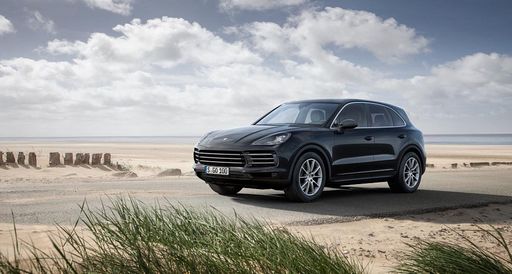
Porsche Cayenne
Land Rover Range Rover Velar
The Land Rover Range Rover Velar exemplifies a harmonious blend of elegance and capability, capturing the essence of modern luxury SUVs. Its sleek silhouette and refined design details make it stand out on both urban roads and off-road adventures. Inside, the Velar offers an impeccably crafted interior, combining premium materials with cutting-edge technology for a sophisticated driving experience.
details @ media.landrover.com
@ media.landrover.com
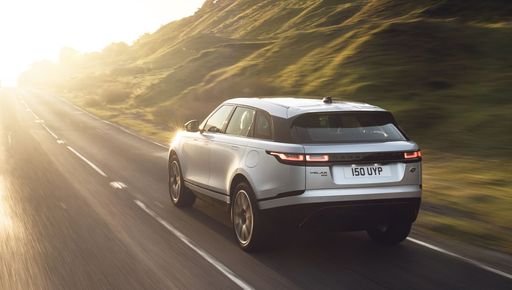 @ media.landrover.com
@ media.landrover.com
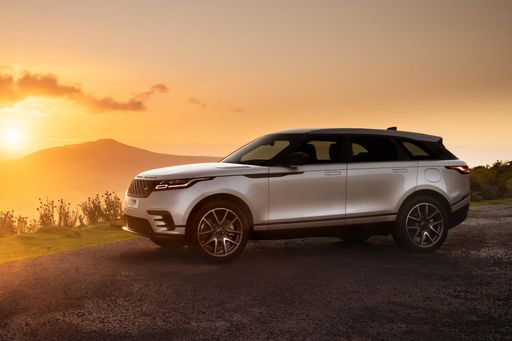 @ media.landrover.com
@ media.landrover.com
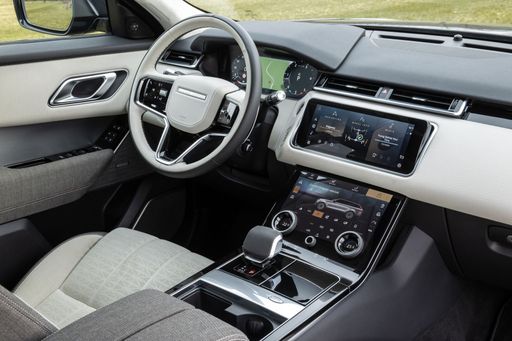 @ media.landrover.com
@ media.landrover.com
Porsche Cayenne
Der Porsche Cayenne präsentiert sich als beeindruckender Vertreter der Premium-SUVs und verbindet kraftvolles Design mit luxuriösem Komfort. Sein dynamisches Fahrverhalten und die hochwertigen Materialien im Innenraum machen jede Fahrt zu einem besonderen Erlebnis. Zudem bietet der Cayenne modernste Technologiefunktionen, die sowohl Unterhaltung als auch Sicherheit gewährleisten.
details @ Porsche Media Deutschland
@ Porsche Media Deutschland
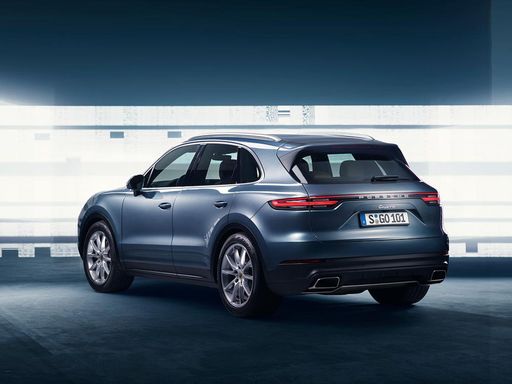 @ Porsche Media Deutschland
@ Porsche Media Deutschland
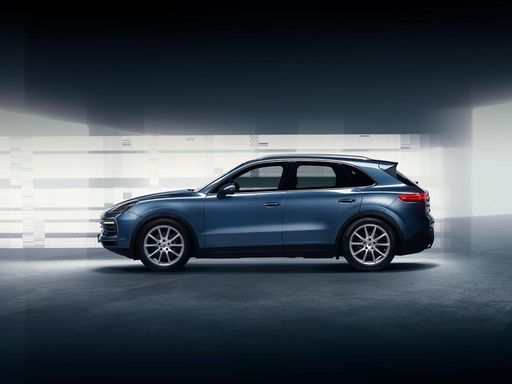 @ Porsche Media Deutschland
@ Porsche Media Deutschland
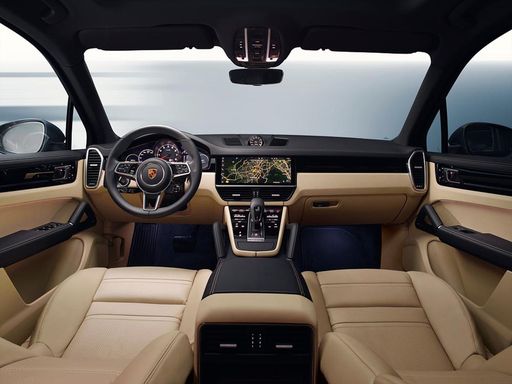 @ Porsche Media Deutschland
@ Porsche Media Deutschland
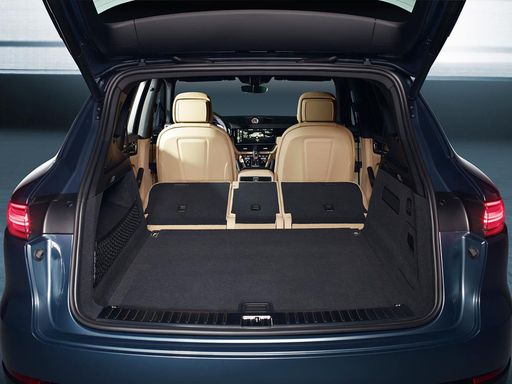 @ Porsche Media Deutschland
@ Porsche Media Deutschland

|

|
|
|
|
Costs and Consumption |
|
|---|---|
|
Price
61900 - 87400 £
|
Price
87000 - 186400 £
|
|
Consumption L/100km
4.8 - 10.2 L
|
Consumption L/100km
4 - 12.2 L
|
|
Consumption kWh/100km
-
|
Consumption kWh/100km
-
|
|
Electric Range
63 km
|
Electric Range
74 - 83 km
|
|
Battery Capacity
15.40 kWh
|
Battery Capacity
21.80 kWh
|
|
co2
110 - 232 g/km
|
co2
90 - 277 g/km
|
|
Fuel tank capacity
62 - 83 L
|
Fuel tank capacity
70 - 90 L
|
Dimensions and Body |
|
|---|---|
|
Body Type
SUV
|
Body Type
SUV
|
|
Seats
5
|
Seats
4 - 5
|
|
Doors
5
|
Doors
5
|
|
Curb weight
2003 - 2280 kg
|
Curb weight
2130 - 2670 kg
|
|
Trunk capacity
503 - 552 L
|
Trunk capacity
434 - 772 L
|
|
Length
4797 mm
|
Length
4930 mm
|
|
Width
1933 mm
|
Width
1983 - 1989 mm
|
|
Height
1657 - 1665 mm
|
Height
1652 - 1698 mm
|
|
Max trunk capacity
1335 - 1358 L
|
Max trunk capacity
1344 - 1708 L
|
|
Payload
460 - 587 kg
|
Payload
365 - 705 kg
|
Engine and Performance |
|
|---|---|
|
Engine Type
Petrol MHEV, Plugin Hybrid, Diesel MHEV
|
Engine Type
Petrol, Plugin Hybrid
|
|
Transmission
Automatic
|
Transmission
Automatic
|
|
Transmission Detail
Automatic Gearbox
|
Transmission Detail
Automatic Gearbox
|
|
Drive Type
All-Wheel Drive
|
Drive Type
All-Wheel Drive
|
|
Power HP
204 - 404 HP
|
Power HP
353 - 739 HP
|
|
Acceleration 0-100km/h
5.4 - 8.3 s
|
Acceleration 0-100km/h
3.6 - 6 s
|
|
Max Speed
209 - 250 km/h
|
Max Speed
248 - 305 km/h
|
|
Torque
430 - 650 Nm
|
Torque
500 - 950 Nm
|
|
Number of Cylinders
4 - 6
|
Number of Cylinders
6 - 8
|
|
Power kW
150 - 297 kW
|
Power kW
260 - 544 kW
|
|
Engine capacity
1997 - 2997 cm3
|
Engine capacity
2995 - 3996 cm3
|
General |
|
|---|---|
|
Model Year
2025
|
Model Year
2025
|
|
CO2 Efficiency Class
G, C
|
CO2 Efficiency Class
G, B, C
|
|
Brand
Land Rover
|
Brand
Porsche
|
What drivetrain options does the Land Rover Range Rover Velar have?
The Land Rover Range Rover Velar is offered with All-Wheel Drive.
The prices and data displayed are estimates based on German list prices and may vary by country. This information is not legally binding.
